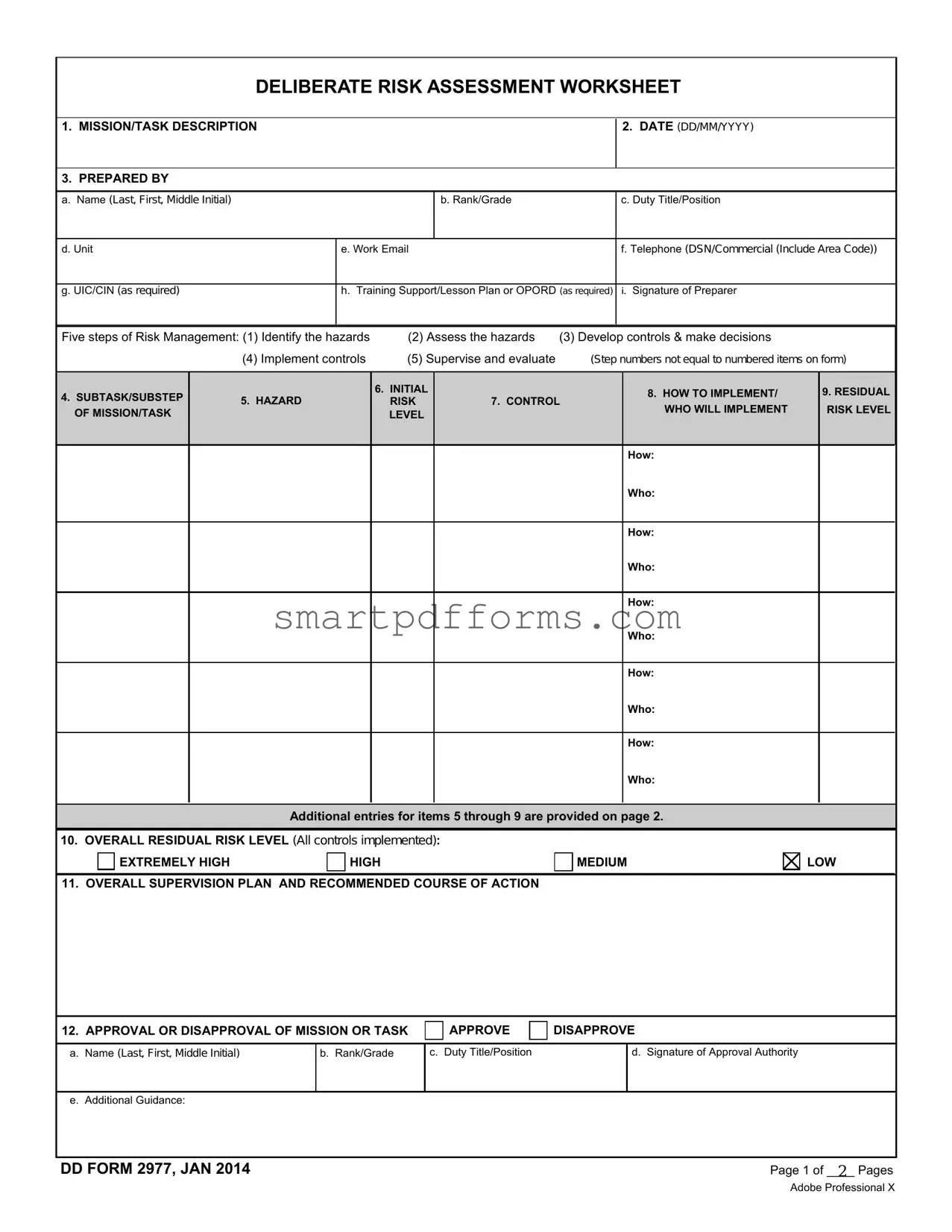In the realm of military operations, the Deliberate Risk Assessment Worksheet, known formally as DD Form 2977, serves as a critical tool in the maneuvering and execution of tasks and missions with a keen eye on safety and risk mitigation. This document meticulously outlines the process by which military personnel identify, assess, and control risks associated with specific missions or tasks. Beginning with a comprehensive mission or task description, the form guides the user through a detailed process that includes the enumeration of subtasks/substeps, identification of hazards, and assessment of initial risk levels. Crucial to this process is the development and implementation of controls aimed at mitigating identified risks, followed by an assessment of residual risk levels post-control implementation. The worksheet further demands the articulation of an overall supervision plan and a recommendation for action, which culminates in an authoritative approval or disapproval of the mission or task based on the compiled risk assessment. A unique aspect of the form is its mandatory review process, designed to ensure ongoing relevance and effectiveness of risk assessment over time, along with a section dedicated to feedback and lessons learned to foster continuous improvement in risk management practices. Additionally, the form allows for detailed comments or remarks and acknowledges the necessity for supplemental pages, ensuring comprehensiveness in documentation. Through these elements, DD Form 2977 underscores the importance of deliberate risk assessment in preserving the safety and success of military operations.



